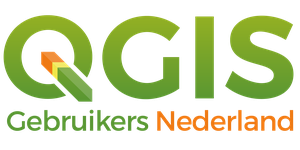QGISRed is a freeware QGIS plugin developed to assist in building and analyzing hydraulic models of water distribution networks of any complexity, up to the level of detail required by Digital Twins. The plugin works seamlessly with QGIS which enables the user to georeference all network elements, use geographic background layers, edit graphical and alphanumeric data, use geoprocessing tools, visualize data by layers, customize the symbology, etc.
QGISRed relies on an easy-to-use relational database of SHP and DBF files based on the EPANET data model, which has been extended to add new capabilities. Starting from the EPANET data model significantly reduces the learning curve.
In fact, the previous skills required on QGIS are minimum because QGISRed provides numerous tools to help building hydraulic models, to manage demand scenarios and to analyze the results without the need to use the QGIS environment, such as:
Project manager for easy project loading and storageAutomatic creation of new empty projectsCreation of a project backupImport/export EPANET INP filesImport basic network components from Shapefiles and other auxiliary components managed by the Digital Twin (DT) such as service connections and isolation valves. Shortly also meters, hydrants, purge valves, etc.Automatic generation of topological relationships between all the network elementsGraphical editing tools for all network elements including those of the DT (add, delete, move, edit vertices and nodes, reverse links, multiple selection, etc.)Tools to debug the network layout and verify its connectivityDefault values to newly created elementsProperty editor for all model and DT component attributes, analysis options and default valuesComplete editor of analysis options and default valuesAutomatic calculation of pipe lengths from the coordinates of the verticesAutomatic interpolation of node elevations from DTMAutomatic estimation of pipe roughness from material and age of pipesConversion of roughness coefficients between different headloss formulas and unit systemsVisualization of multiple demands and quality sources as distinct layers and edition of its properties integrated with those of nodesAutomatic nodal demand allocation from punctual or sectorial consumptionsAutomatic pattern and hydraulic efficiency allocation by sectorScenario management for various model parameters by importing/exporting filesDemand scenarios management by importing/exporting filesPowerful editors of curves, patterns, controls and rulesValidation anywhere of model properties against typical data entry errorsLoad of demands to service connections from the meter readings, and move them to the closest nodesManagement of service connections and isolation valves as differentiated elementsDetection of isolated zones when closing the isolation valves and canceling the demands on themOptional integration of service connections into the modelDeclaration of the meter sensors as distinct elements and the association of signals to themReading field data for the simulation period from files and export to EPANETAutomatic identification of hydraulic sectors and demand zonesModel simulation by using the EPANET toolkit 2.2Visualization of simulation results by means of tables, color coded layers, arrows and floating or static labelsAutomatic creation of legends and symbols for the results (customizable with QGIS tools)Navigation bar to display simulation resultsNevertheless, in case the user decides to use the QGIS tools to edit the data, QGISRed provides powerful facilities to detect potential editing errors before simulating the model, or to fill in the missing information.
The development of the new QGISRed plugin is an initiative of the REDHISP Research Group of the Institute of Water and Environmental Engineering (IIAMA) of the Polytechnic University of Valencia, UPV (Spain), led by Professor Fernando Martínez Alzamora. Its implementation is carried out by the WaterPi company under the direction of Néstor Lerma, PhD Eng.
The QGISRed extension for QGIS is an update of the old GISRed application developed by our group for the ArcView 3.1 environment (see launching paper). Currently the name GISRed has been kept concerning to the libraries developed in .net, which are used by QGISRed to improve the processing time and constitutes the core of the GISRed standalone application.
For more information the user can check the official website of QGISRed or the section of QGISRed in the official QGIS plugin repository. Also User’s Manual in English and in Spanish are available.
Requeriments .Net Framework 4.5 - Windows OS.



























